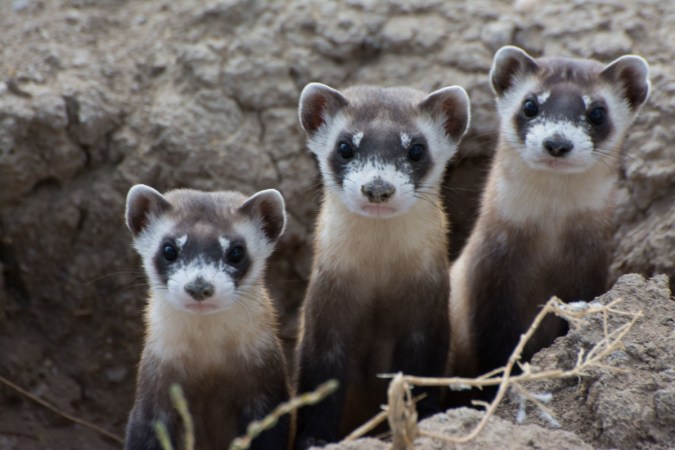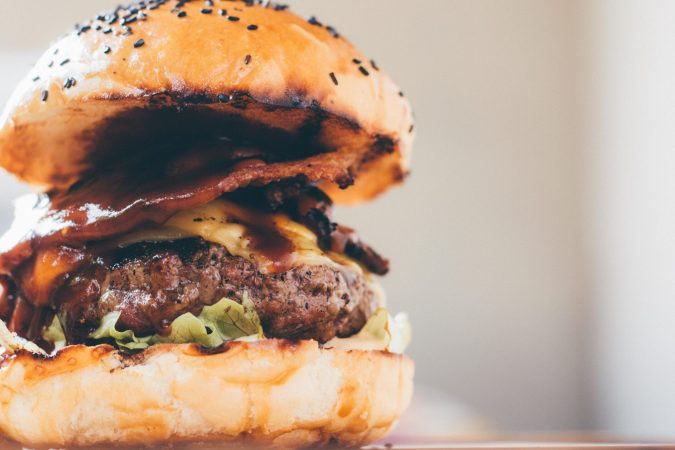

This article was originally featured on High Country News.
Those who visit the Gila Wilderness in southern New Mexico these days have to grapple with a number of perils: rattlesnakes, extreme heat, bears, rugged terrain and, of course, raging bulls. Between 50 and 150 cattle are parading across the landscape, chomping native plants down to the nub, trampling riparian areas to dust, eroding landscapes, damaging habitat and oozing vast clouds of methane. Oh, and, according to the U.S. Forest Service, they’re also playing bullfighter with unsuspecting hikers.
This kind of behavior is, naturally, unacceptable to the Gila National Forest, which manages the land in question. So, last summer, officials hired contract wranglers to round up the rambunctious cattle and evict them from the forest. After both contractors and cows were injured in the process, officials decided to take a more lethal tack, and, in February, sent out helicopter-borne shooters to “attempt to eradicate them from the area,” as the agency’s decision put it.
It may be the most consequential action the federal government has taken in at least two decades to mitigate the impacts of overgrazing on public lands. It might even look like the start of real grazing policy reform, something conservationists have been pushing for since the 1970s. But there’s a catch: The only reason the Forest Service did something this time is that the bovines in question are feral — descendants of cattle abandoned by a belly-up livestock operator in the 1970s. Think of them as the bovine version of “orphaned” oil and gas wells, similarly sullying land and water and continuously belching methane.
The Forest Service’s justification for its lethal response, in a nutshell is: “Feral cattle are an invasive species that damage native habitats with their grazing behaviors.” That’s all fine and good, but you could take the “feral” off the front of that sentence and it would still be equally true. And yet the 1.5 million or so additional “authorized” cattle that are trampling the public lands are getting off scot-free. Same goes for Cliven Bundy, whose own semi-feral cattle have been illegally grazing public lands in Nevada for about 40 years, and there is still no plan to remove them.
The Biden administration promised new grazing rules this spring, but early indications suggest we can expect another big nothing-burger. Several weeks ago, the administration announced this year’s grazing fees, although it hardly needed to go through the trouble, since for the 27th year in the last four decades, the fee once again amounts to just $1.35 per animal unit month — the minimum allowed by law. That’s all it takes to authorize a half-ton cow and her calf to gobble up 600 to 800 pounds of the public’s forage per month, destroy cryptobiotic soil and disgorge more climate-warming methane. Hell, you can’t get a cup of coffee for $1.35 these days!
8.09 million
Number of animal unit months (AUMs) for cattle authorized by the Bureau of Land Management for Western states in 2021. This does not include non-cattle livestock or cattle grazing on Forest Service lands.
233 pounds per year
Amount of methane emitted by a single cow-calf pair.
$6.10; $4.85; $20.10
Minimum fee per AUM for grazing on Utah state land; New Mexico state land; and non-irrigated private land (estimated average), respectively.
The Bureau of Land Management says it uses market forces and other considerations to determine its grazing fees. Yet even though the market for cattle has changed substantially over the last 40 years, grazing fees haven’t budged. In 2000, for example, the price for a pound of live cattle was $0.70; today it’s $1.65. And yet in both years the grazing fee was the same. One might argue that low fees are necessary to keep cheeseburgers from becoming a luxury item. But since only about 5% of America’s 29 million beef cows graze public lands, the fee would have little impact on your tab at Blake’s Lotaburger, New Mexico’s favorite fast food beef joint. While in some ways it’s far better to have cows out on the range than confined to a feedlot, open-range cattle are a lot harder on the climate.
That’s the conclusion of a study published last year, which found that public-range cows not only emit methane (via enteric fermentation) and nitrous oxide (in manure), like all cattle do, they also wreck native plants and soils enough to shift the landscape from serving as a carbon sink to becoming a source of greenhouse gases. And they emit more methane because the energy content of public-land forage tends to be lower than the alfalfa or grain fed to pastured and feedlot cattle. “The forage from public lands, especially when high in exotic grasses,” the authors wrote, “is about the worst diet to feed cattle from a greenhouse gas perspective.”
Low fees are only one of the places the feds have dropped the ball on grazing. The data shows that the BLM fails to meet its own standards for rangeland health. Agency-managed national monuments — including Bears Ears and Grand Staircase-Escalante national monuments in Utah and Canyon of the Ancients in Colorado — not only grandfathered in existing grazing, but allow for new leases, even when cow hooves are likely to damage cultural sites.
$12.77 million
Revenues to the BLM from grazing fees (for all livestock categories) in 2021.
$105.9 million
Amount budgeted to the Department of Interior for rangeland management in 2020, meaning the taxpayers are subsidizing grazing operations to the tune of $93 million per year.
$2.5 billion
Total amount of livestock subsidies paid by the federal government to ranchers and farmers in the 11 Western states between 1995 and 2020.
Congress has also failed to pass legislation making voluntary grazing permit retirements permanent. That would allow conservation groups to buy out a willing livestock operator’s permit, knowing that it would stay retired, something that seems like a win-win, though it is still adamantly opposed by the Sagebrush Rebel crowd. As things stand, retired permits can be put back into action 10 years down the road, which, you know, sort of defeats the purpose.
Admittedly, it’s hard to make meaningful reforms in this realm. To do so means pushing back against the mythology of cowboy culture and the outsized political influence livestock operators wield. Even the plan to shoot the feral cattle in the Gila ran up against this: The New Mexico Cattle Growers’ Association tried to stop the shoot, claiming it was animal cruelty. (A judge rejected the bid.) It’s an odd stance, given that the livestock industry advocates shooting wolves and other predators, ridding the public lands of wild horses, and, of course, ultimately eating its cows.
But then again, (almost) no one is suggesting that the feds start shooting “authorized” cattle. They’re just asking for a few common-sense reforms and maybe a grazing fee a little more in line with the cost of a cheeseburger. It shouldn’t be so difficult.






















